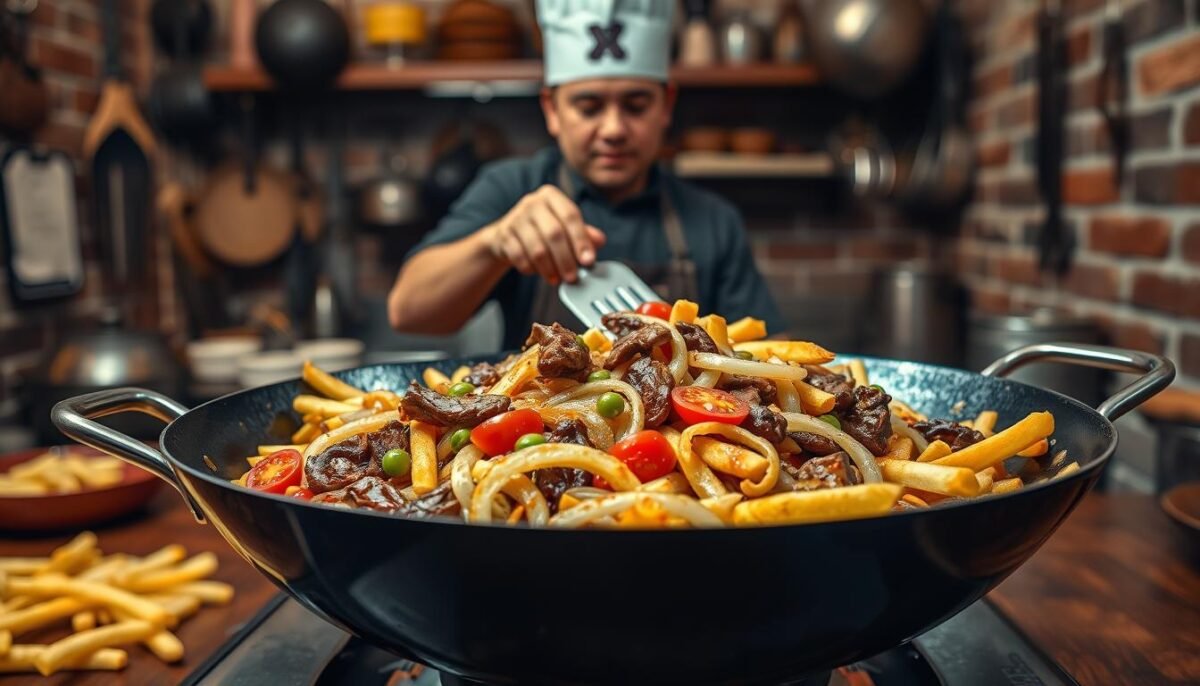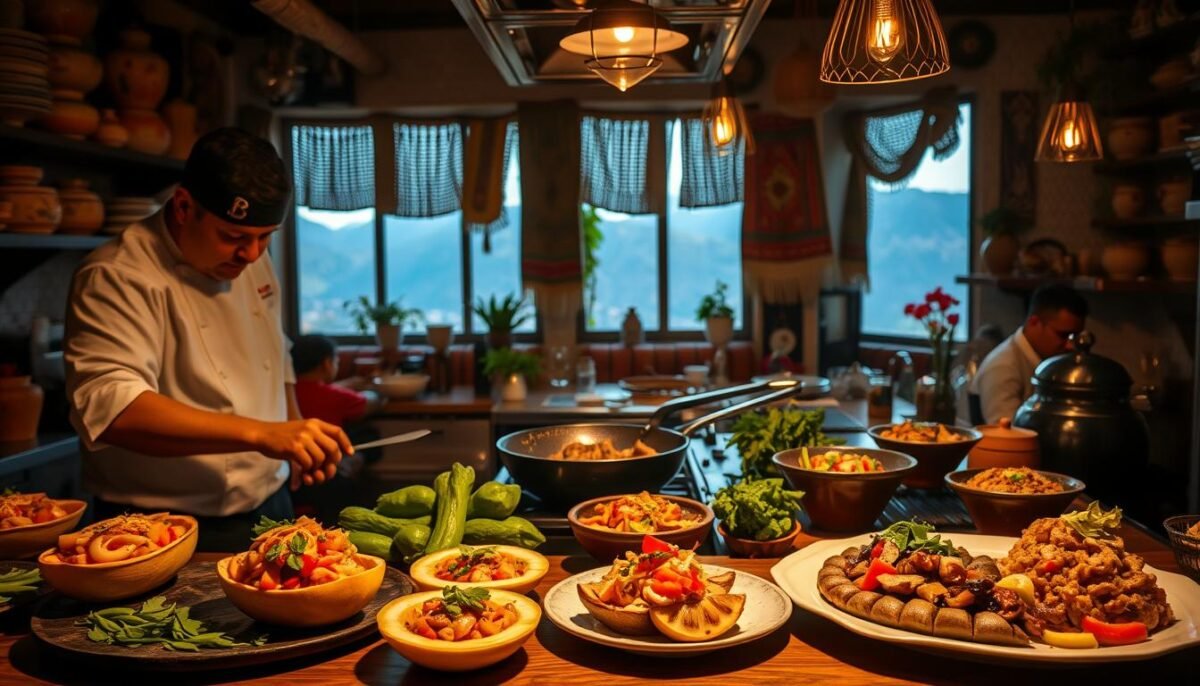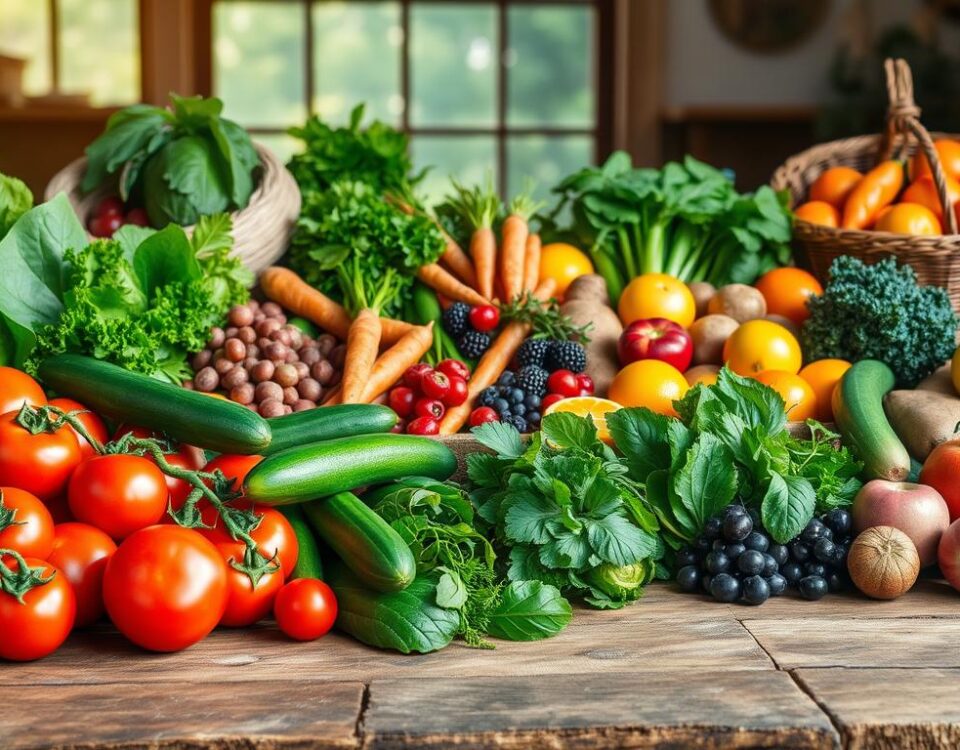
A Taste of Vietnam: How to Make Pho Like a Local
April 29, 2025
The Flavors of Ethiopia: How to Make Injera and Spicy Wot Stew
April 30, 2025I still remember the first time I tasted freshly made ceviche at my aunt’s kitchen in Lima. The tang of lime, the crunch of onions, and the melt-in-your-mouth fish—it felt like a celebration of simplicity. Growing up, our family meals were a bridge between generations, where recipes weren’t just instructions but stories. Today, I want to share that same joy with you.
One summer, my abuela taught me her secret: always use fish caught that morning. We’d walk to the market at dawn, picking limes still damp with dew. That lesson stuck. Whether it’s mastering ceviche’s citrus balance or nailing lomo saltado’s smoky stir-fry, the soul of Peru’s coastal cuisine lies in respecting ingredients.
This guide isn’t just about recipes—it’s about capturing moments. You’ll learn how to choose the right fish, why fresh lime is non-negotiable, and where to find inspiration from beloved local spots. Let’s turn your kitchen into a canvas for flavors that dance between tradition and creativity.
Key Takeaways
- Fresh, high-quality fish is essential for authentic ceviche.
- Balancing lime acidity elevates both flavor and texture.
- Traditional techniques create depth in dishes like lomo saltado.
- Local restaurants in Peru inspire time-tested methods.
- Simple ingredients tell rich culinary stories.
Ingredients and Essential Techniques for Authentic Peruvian Flavors
Every great dish begins with three things: quality components, thoughtful technique, and a dash of heart. Let’s break down how to layer flavors like a pro—without needing a plane ticket to South America.
Fresh Ingredients and Key Components
Start with crisp red onion—its sharpness softens beautifully when soaked in ice water. I learned this trick from a Lima street vendor who swore by 10-minute baths. Pair it with hand-torn cilantro leaves; their citrusy punch cuts through rich dishes.
Never underestimate your lime juice. Squeeze it fresh—bottled versions lack brightness. For spice, ají paste adds smoky depth, while a pinch of black pepper ties everything together. And always use filtered water when rinsing ingredients. Trust me, it matters.
Tools, Marinating, and Preparation Tips
Keep a glass bowl in your refrigerator for pre-chilling ingredients. Cold surfaces prevent fish from “cooking” too early in acidic marinades. Slice onions paper-thin—they’ll absorb flavors faster and add crunch without overwhelming bites.
When prepping garlic, smash it with the flat of your knife to release oils. Mix spices with salt first; it helps them cling to proteins. And that ají paste? Stir it into lime juice before adding other elements for even distribution. Your taste buds will thank you later.
Peruvian Ceviche Lomo Guide
My mornings at Seattle’s Pike Place Market taught me one truth: the best meals start with ingredients that still smell like the ocean. For vibrant, tender results, your protein should glisten like moonlight on waves. Let’s explore how to transform simple elements into something extraordinary.

The Foundation: Quality Meets Technique
Opt for firm-fleshed varieties like sea bass or bass—their texture holds up to acidic marinades. I once used day-old fish for a dinner party, and the mushy result still haunts me. Look for clear eyes and bright red gills when shopping.
Citrus juice isn’t just flavor—it’s science. A 3:1 lime-to-lemon ratio creates the ideal pH to “cook” proteins without toughness. Add a splash of orange for subtle sweetness. This blend becomes leche de tigre, the marinade that doubles as a zesty sauce.
| Fish Type | Texture | Marinade Time |
|---|---|---|
| Sea Bass | Buttery | 12-15 mins |
| Bass | Flaky | 10-12 mins |
| Flounder | Delicate | 8-10 mins |
Before adding citrus, I massage sea salt into fillets with ice water. This opens pores for better flavor absorption. Rinse thoroughly—you want seasoning, not salinity.
Roasted sweet potato slices make perfect edible spoons for scooping. Their earthy sweetness balances sharp onions. Finish with cilantro leaves and a sprinkle of sal de maras for that briny whisper of home.
Remember: every bite should tell a story. When your ingredients sing in harmony, you’re not just making food—you’re keeping traditions alive.
How to Master Classic Ceviche
There’s a rhythm to crafting this iconic dish—like conducting an orchestra where every ingredient hits the right note. Let’s start with the star: glistening fresh bass or similar firm fish. I always chill my knife and cutting board first; cold tools keep textures crisp.
Step-by-Step Ceviche Recipe for Perfect Leche de Tigre
Cube your fish into bite-sized pieces—too small, and they’ll turn mealy. Combine lime and lemon juice (3:1 ratio) with a spoon of ají amarillo paste. This golden pepper adds fruity heat without overpowering. Let the mix sit 5 minutes to mellow the spice.
| Step | Ingredient | Time |
|---|---|---|
| Marinate Fish | Citrus juice + ají | 8-10 mins |
| Soak Onions | Thin red slices | Ice bath 7 mins |
| Mix Garnish | Sweet potato, cilantro | Prep while waiting |
Drain onions thoroughly—soggy slices dilute flavors. Fold them into the fish gently. I add cracked pepper last for a sharp finish. The magic happens at 12 minutes exactly. Longer marination turns tender bites rubbery.
Tips to Keep Your Ceviche Fresh and Bright
Serve immediately on chilled plates. For garnish, roast sweet potato slices until caramelized edges form. Their sweetness balances the tiger milk’s tang. Sprinkle chopped cilantro just before serving—its bright green leaves fade fast in acidic sauce.
If prepping ahead, keep elements separate until the last moment. I store fish and marinade in sealed jars side by side. When ready, pour, stir, and plate. This trick keeps textures perfect for lunch or unexpected guests.
How to Make Traditional Lomo Saltado
The sizzle of beef hitting a scorching pan sends my senses into overdrive every time. This stir-fry masterpiece thrives on contrast—charred edges against tender meat, tangy sauce hugging crispy potatoes. Let’s unlock its magic through smart prep and fiery heat.

Preparing the Stir-Fry and Balancing Flavors
Start with uniform strips of beef—cut against the grain for tenderness. I learned the hard way that uneven pieces cook at different rates. Pair them with onions and tomatoes sliced thick enough to hold their shape during the cooking frenzy.
Heat your wok until it smokes. Add oil in a thin stream around the edges. Toss beef in small batches—crowding steals the sear. Listen for that crisp hiss as meat hits metal. Stir-fry 90 seconds max, then set aside.
| Ingredient | Role | Prep Tip |
|---|---|---|
| Ají amarillo | Fruity heat | Deseed for milder spice |
| Potatoes | Textural contrast | Fry twice for crunch |
| Soy sauce | Umami depth | Splash late to prevent burning |
Fry potato wedges until golden before adding to the wok. Their starchy surface soaks up sauce without turning soggy. For the ají kick, I blend fresh peppers with garlic—bottled pastes lack that bright punch.
Time matters here. Tomatoes go in last—just 30 minutes to soften slightly. Toss everything with vinegar and soy sauce, letting flavors marry without overcooking. Serve immediately over rice, letting steam rise like a Lima street vendor’s cart.
My twist? A dash of craft beer deglazes the pan, adding malty notes. Stay true to the recipe’s roots, but make it yours. That’s how traditions evolve.
Exploring Regional Variations and Fusion Twists
Cooking across cultures is like learning a new language—every ingredient becomes a word, every technique a grammar rule. When adapting traditional recipes for U.S. kitchens, I focus on preserving soulful flavors while embracing local ingredients. Here’s how to bridge continents without losing authenticity.

Adapting the Recipe for U.S. Kitchens
Double the lime juice if your citrus lacks punch—I’ve found California-grown varieties often need a boost. Swap ají amarillo paste with a mix of habanero and paprika for similar heat with smokier notes. Pre-chopped frozen onions save time without sacrificing crunch when soaked in ice water.
| Traditional | U.S. Substitute | Ratio |
|---|---|---|
| Ají amarillo | Habanero + paprika | 1:1 |
| Choclo corn | Sweet corn kernels | 1 cup |
| Rocoto pepper | Jalapeño + black pepper | 2:1 |
For busy weeknights, marinate fish in lime juice while prepping other ingredients. The acid works faster than you’d think—10 minutes max for flaky textures.
Innovative Twists on Classic Dishes
My favorite fusion hack? Blend ají paste with miso for a savory-sweet sauce that glazes grilled vegetables. Add orange zest to tiger’s milk for citrus complexity—it makes store-bought versions taste flat.
When experimenting with pepper levels, balance heat with cooling agents. Thinly sliced jicama or cucumber leaves make perfect edible scoops. Last month, I swapped sea bass for sustainably caught halibut in my ceviche—the firmer texture held up beautifully.
Remember: fusion should enhance, not erase. Keep that lime nearby, respect your fish, and let creativity flow. After all, every kitchen tells its own story.
Conclusion
Every time I slide marinated fish into a chilled bowl, I’m transported back to my abuela’s kitchen. The magic lies in details: precise tbsp measurements of citrus juice, a perfect tbsp of ají paste, sea-fresh sole sliced just right. Make sure each step—from rinsing garlic to layering spices—is done with care. This isn’t just cooking; it’s preserving stories.
Your bowl becomes a bridge between generations. While experimenting, respect classic recipes—swap regular potatoes for sweet varieties, but keep that golden tiger milk base. Make sure to use a wide bowl for even serving. Roasted potatoes add earthy balance, while a cup of homemade sauce ties it together. Quality ingredients like fresh sole and hand-squeezed lime elevate every dish.
The process thrives on intention. Stirring the marinade with precise tbsp portions, choosing the right cup for mixing—each choice matters. Make sure your bowl echoes with both tradition and your unique touch. Don’t forget—every tbsp of spice, pinch of sea salt, or crispy potato wedge writes a new chapter. Explore local restaurants where these flavors shine, then recreate them with love. After all, great food connects us through shared cuisine and stories.
FAQ
What type of fish works best for ceviche?
I always recommend using ultra-fresh, firm white fish like sea bass or sole. Avoid oily varieties—they can overpower the bright citrus flavors. Check with local markets for sushi-grade options!
Can I substitute ají amarillo paste if I can’t find fresh peppers?
Absolutely! I’ve used jarred ají amarillo paste (like the Mercado Global brand) for years. Start with 1 tsp and adjust for heat. No paste? A mix of habanero and paprika works in a pinch.
How long should I marinate the fish in lime juice?
For that perfect texture, 15–20 minutes max. Over-marinating turns the fish mushy. Pro tip: Prep your red onion garnish first so it’s ready when the fish is done “cooking.”
What’s the secret to balanced leche de Tigre?
Taste as you go! I balance tangy lime juice with a splash of fish broth or ice-cold water. A hint of minced garlic and chopped cilantro adds depth without overpowering the citrus.
Can I make lomo saltado without a wok?
Yes! I’ve nailed it using a cast-iron skillet. Crank the heat to high, cook in batches, and keep the fries crispy by serving them on the side. The key is replicating that smoky stir-fry char.
Are there vegetarian swaps for traditional dishes?
Totally! For ceviche, try hearts of palm or king oyster mushrooms. In lomo saltado, tofu or seared portobellos work wonders. Just amp up the soy sauce and ají panca for that umami kick.
How do I store leftovers safely?
Honestly, ceviche tastes best fresh. If you must, refrigerate in an airtight container for up to 4 hours—any longer and the texture suffers. Lomo saltado? Reheat gently in a pan to keep the fries from getting soggy.



